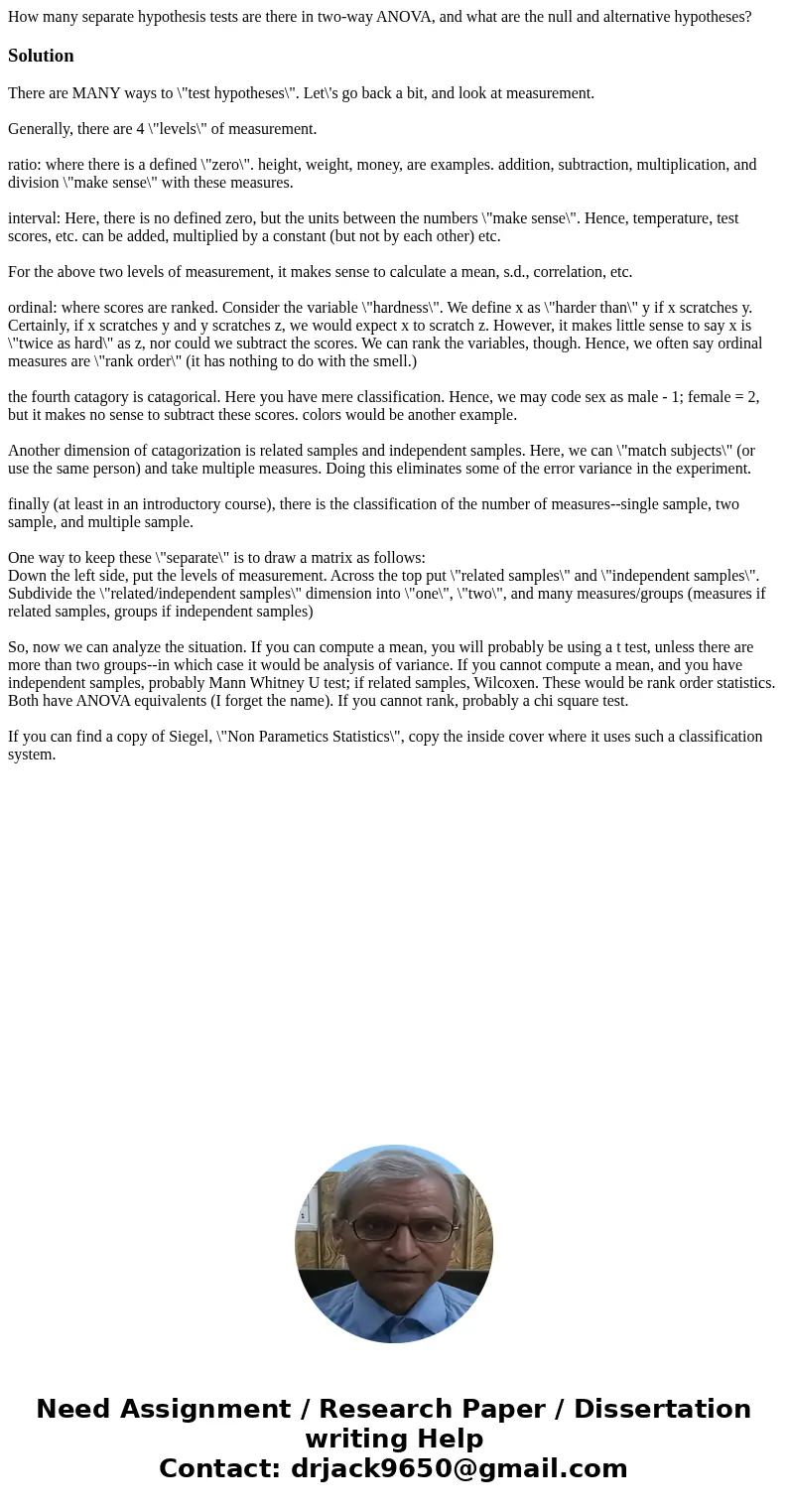How many separate hypothesis tests are there in twoway ANOVA
How many separate hypothesis tests are there in two-way ANOVA, and what are the null and alternative hypotheses?
Solution
There are MANY ways to \"test hypotheses\". Let\'s go back a bit, and look at measurement.
Generally, there are 4 \"levels\" of measurement.
ratio: where there is a defined \"zero\". height, weight, money, are examples. addition, subtraction, multiplication, and division \"make sense\" with these measures.
interval: Here, there is no defined zero, but the units between the numbers \"make sense\". Hence, temperature, test scores, etc. can be added, multiplied by a constant (but not by each other) etc.
For the above two levels of measurement, it makes sense to calculate a mean, s.d., correlation, etc.
ordinal: where scores are ranked. Consider the variable \"hardness\". We define x as \"harder than\" y if x scratches y. Certainly, if x scratches y and y scratches z, we would expect x to scratch z. However, it makes little sense to say x is \"twice as hard\" as z, nor could we subtract the scores. We can rank the variables, though. Hence, we often say ordinal measures are \"rank order\" (it has nothing to do with the smell.)
the fourth catagory is catagorical. Here you have mere classification. Hence, we may code sex as male - 1; female = 2, but it makes no sense to subtract these scores. colors would be another example.
Another dimension of catagorization is related samples and independent samples. Here, we can \"match subjects\" (or use the same person) and take multiple measures. Doing this eliminates some of the error variance in the experiment.
finally (at least in an introductory course), there is the classification of the number of measures--single sample, two sample, and multiple sample.
One way to keep these \"separate\" is to draw a matrix as follows:
Down the left side, put the levels of measurement. Across the top put \"related samples\" and \"independent samples\". Subdivide the \"related/independent samples\" dimension into \"one\", \"two\", and many measures/groups (measures if related samples, groups if independent samples)
So, now we can analyze the situation. If you can compute a mean, you will probably be using a t test, unless there are more than two groups--in which case it would be analysis of variance. If you cannot compute a mean, and you have independent samples, probably Mann Whitney U test; if related samples, Wilcoxen. These would be rank order statistics. Both have ANOVA equivalents (I forget the name). If you cannot rank, probably a chi square test.
If you can find a copy of Siegel, \"Non Parametics Statistics\", copy the inside cover where it uses such a classification system.

 Homework Sourse
Homework Sourse